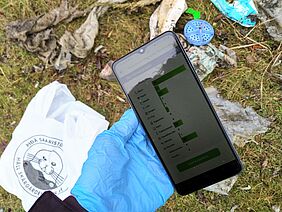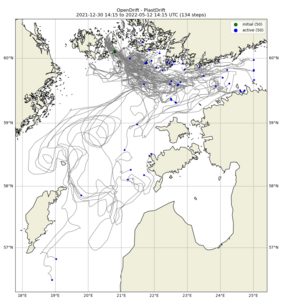Last Saturday, on 7th of May, POPCORN organized together with Keep Archipelago Tidy and Kesärauhaa music festival a clean-up in the island of Vepsä, a recreational area of the city of Turku. It was the annual Nordic coastal clean-up day, and these three parties had decided to do something good for the nature. A waterbus took the volunteers to their destination, where they stormed the beaches. The cleaners worked in threes, two of the persons doing the dirty work of collecting the litter, whereas the third one acted as a clerk, who marked down the type of litter that was removed from the beach. Plastics, paper, other litter were the most common litter type removed from the beaches. Fourth one was cigarette butts. Maybe these could have included also our virtual cigarette butts?
The island of Vepsä is located along the shipping line leading to and from the ports of Naantali and Turku, only about 11 km away from the berths of the ferries of Viking Line and Silja Line, which have several daily connections to Åland Islands and onwards to Sweden. Anything, that falls into sea from the passing ferries, such as cigarette butts, could wash ashore on this island. But what about our 50 cigarette butts, could some of them have drifted to the island of Vepsä from the Archipelago Sea, where they hit the water around new years? Let’s have a look at the latest simulations.
The cigarette butts started their journey close to Åland islands, and first were confined mostly to the Archipelago Sea with its numerous skerries and small islands. However, then the lure of the southern seas grew stronger among them, and many of them headed to south towards Sweden and Latvia, others to Gulf of Finland between Finland and Estonia. A few seem to have stayed in the Archipelago Sea, one even heading to east towards Turku, but not quite all the way to there. At least not yet either…


